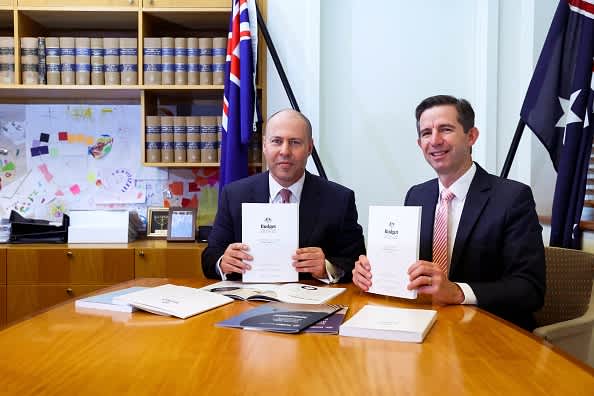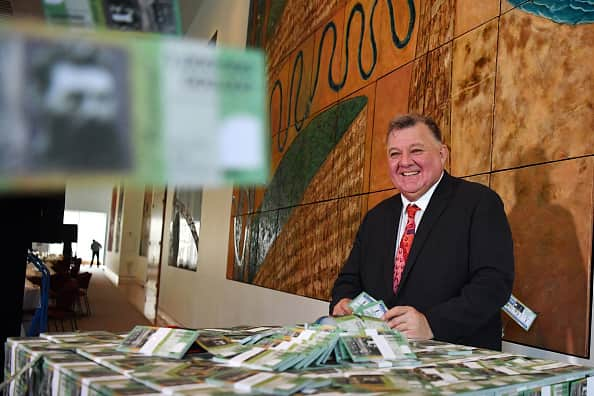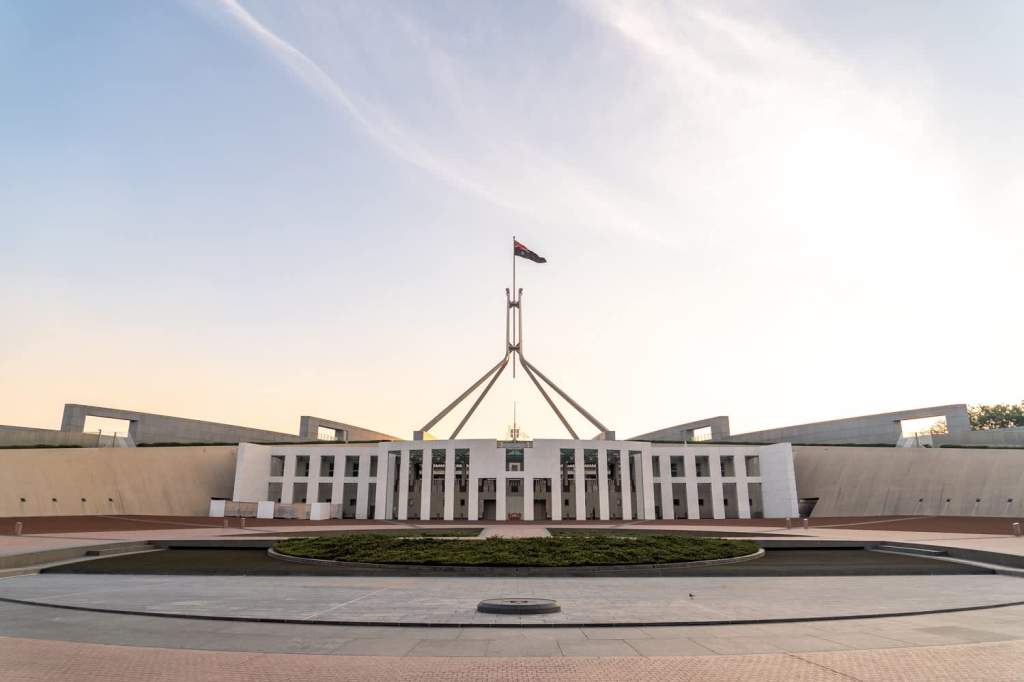Treasurer Josh Frydenberg has laid out his government’s vision for Australia over the next 12 months with the release of the 2021 federal budget.
The budget is essentially what the government will and won’t be spending on this year and generally aims to deliver on election promises and address some of the more pressing issues that have arisen over the previous year.
Frydenberg’s third budget in 2021 has an increased focus on women, infrastructure, and jobs as the Morrison government hopes that Australia’s economic recovery can be supercharged to pull us out of the COVID danger zone.
The plan here is to spend our way out of trouble which is a real shift in ideology and tone from a Treasurer who once vowed to get Australia back in the black. It’s essentially a continuation of what the pandemic forced the Government to do last year, which was open the taps to stop unemployment and lockdowns from spiralling out of control.
We’ll be paying for this for at least a decade, with projections showing that by mid-2025, we’ll still be $57 billion in the red. That might not be the terrifying figure we think it is, as national borrowing and spending works differently from your standard household budget.
While there’s a lot in the budget for aged care, mental health, and a renewed focus on women, the coalition is prioritising industry and infrastructure. There’s almost nothing for the arts, climate change, or the education sector.
Labor has already hit out at the budget by saying it’s a bandaid to address all of the problems created by eight years of Coalition government and that they don’t expect they will be able to really deliver on it.
“The centrepiece of last year’s budget was 450,000 jobs through the JobMaker programme and they only delivered 1000,” Anthony Albanese, the Labor leader said.
The rosy picture of a strong Australian economy is also based on full vaccination by the end of the year, which looks like a tall order, and the containment of COVID is key.
So, what’s in the budget?

Frydenberg spent a lot of time during his 38-minute budget speech explaining our position in comparison with the rest of the world, noting that we are better off economically than the UK and the US.
He focused heavily on jobs and the plan to protect Australians from COVID to create “a more resilient and secure Australia”.
A few notable inclusions are the $270 billion allocated to defence spending over the next decade to make Australia “battle-ready”, along with $1.9 billion for police, national security, and intelligence agencies. This is all being perceived in the context of mounting tensions with China as we shift our military focus away from the Middle East and towards the Asia-Pacific region.
Interestingly, brewers and distillers will receive a $225 million tax relief which is thought to “shave a couple of bucks” off the price of a keg.
Unfortunately, international borders are expected to stay shut until “mid-2022” to ward off the pandemic still raging across the rest of the world.
“This pandemic is far from over,” Frydenberg said, adding that “Australia is well on the road to recovery.” Our economic forecast is expected to see the economy grow 4.5% by 2022 if everything goes to plan.”
COVID and healthcare
There is an extra $1.9 billion to support the vaccine rollout, and $1.5 billion for COVID management, including testing. In total, this government has committed $20 billion to the vaccine rollout and strengthening our healthcare systems in the face of COVID.
Women
Frydenberg said that “sexual harassment is unacceptable”, which got a jeer from the opposition. They’ve allocated $1.7 billion in investment in childcare which shouldn’t really fall under the ‘female’ category but there you go.
The childcare changes come in the form of subsides of up to 95 per cent. However, the policy is a little complicated as it only applies to those with two children under the age of five in childcare at the same time. The policy is also not slated to begin due to “IT” issues, but this is likely designed to be a campaign promise, rather than a practical policy to help those with childcare needs now.
$1.1 billion has been allocated to women’s safety programmes including emergency accommodation, legal assistance, counselling, financial support, and more targeted services for Indigenous, migrant, and asylum-seeking women.
$354 million has been allocated for women’s health services which means more funding for endometriosis research (not something you often hear named in a budget), pre-term birth assistance, and genetic testing for pregnant women.
Aged and disability care
The government has committed to spending $13.2 billion over four years on disability provisions including housing care packaged to help people with disabilities living at home.
There is $17.7 billion in aged care spending to address the findings of the Royal Commission into Aged Care. This means the government will provide for increased time that nurses and carers spend with aged care patients.
There will be 33,000 new training places for personal carers along with a new “Indigenous workforce” and increased regulatory oversight in the delivery of care.
Mental health
Frydenberg stated that “we have nearly doubled mental health spending since coming into office” and they are looking to do more to deal with the mental health fall-out of the pandemic.
That means a $2.3 billion commitment to mental health and suicide prevention. They are planning to set up more “headspace” centres across the country, increase funding for eating disorder support, and increase access to mental health providers through Medicare.
A new national suicide prevention office will be established along with funding for the Royal Commission into Defense and Veteran Suicide.
Businesses, jobs, tax reform
The government hopes to create 250,000 jobs by the end of next year and drive the unemployment rate to below 5%.
The good news here for anyone earning between $48,000-$90,000 per year, is that they will get an extra $1080 per year in tax relief, or $2160 for couples.
They’ve extended tax write-offs for business purchases which is dressed up as a helping hand to working-class voters with Frydenberg saying it will be “easier for a tradie to buy a ute.”
The government has doubled its commitment to the so-far unsuccessful JobTrainer programme. 450,00 new places are being created including 170,00 apprenticeships and traineeships. Training support will be given to an additional 5000 women while there are 2700 places allocated to young Indigenous women in academies along with more STEM scholarships for women.
They’ve also said they want to focus on “digital infrastructure and digital skills,” with a $1.2 billion investment in our “digital economy strategy.”
Housing
The Treasurer put a lot of emphasis on home ownership, with plans to increase public housing and grants for those buying their first home or building a home. These are extensions of the governments homebuilder programme as well as an extension to their first home owners grant.
In essence, the homebuilder programme gives owner-occupiers a grant of up to $25,000 to renovate or build a new home. It has prompted some $30 billion of residential building projects since June of last year and is thought to be contributing to record-high house prices. The programme, which was designed to last just six months, has been extended for a further 12.
In addition, 10,000 houses will be allowed to be purchased by first-time home owners with just a 5 per cent deposit, half the standard 10 per cent. In addition, there will also be 10,000 houses allowed to be purchased with just a 2 per cent deposit. This has been created to try and help first-time home owners get onto the property ladder.
There is also an incentive for older homeowners to downsize. Anyone doing so will be allowed to put $300,000 into their super, a move which is designed to get “more stock into the housing market.”
What we didn’t see
$2.1 billion is allocated for tourism, arts, and international education. This might sound like a lot, but there are already cries from the University Sector, decimated under COVID due to the refusal of JobKeeper to those in Higher Education, that it means a real-term funding cut.
Climate change is also off the table, with money allocated to fight emissions going to “technology, not taxes,” as this government loves to say. That means investment in carbon capture, a technology that has yet to be proven anywhere in the world, and $1.6 billion to fund “clean hydrogen” and energy storage.
Frydenberg stated that “we are the custodians of this great continent for future generations” while in the same breath proclaimed the opening of new gas fields for the extraction of natural resources. It’s hard to square those two statements, and the government’s commitment to fighting climate change seems flimsy at best.
Frydenberg also appeared to take credit for the massive uptake of rooftop solar, which is something of an individual and community-driven trend, while also proclaiming the success of the “battery of the nation,” built in South Australia by private interests, not state.
He again rattled off the old Coalition slogan that Australia will “meet and beat our 2030 target,” something only true through tricky calculations, and said that we are “on the pathway to net-zero… preferably by 2050.”
While “tax cuts to put more money into peoples pockets,” might sound good, it also means tax cuts for the supremely wealthy as well as low-and-middle-income earners.
“Australia is coming back,” Frydenberg proclaimed. We will have to see whether or not that’s true.
Also, this…

Craig Kelly, the MP recently banned from Facebook for spreading COVID conspiracy theories, also turned up to Parliament with a pallet of fake money printed with the face of Ned Kelly to make a point about government spending.
He was claiming to make a point about the fact that this unprecedented budget, far more generous than previous Coalition spending plans, will have to be paid for down the track.
Kelly backtracked on the stunt however after it was revealed he intended to charge the taxpayer for the cost of printing.
Read more stories from The Latch and subscribe to our email newsletter.







